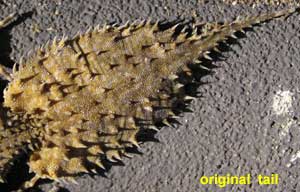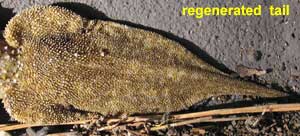 |
| The Three Sisters |
Here in the Colonies of New South Wales we have the faith of the Scots, in knowing that there be dragons all over the world. For the believer that is. In the Blue Mountains of NSW and almost at my doorstop lies some of Australia's finest National Parks and dragons lie therein.
Maybe I should re-name the National Park behind our property - to Australias Glencoe Woodlands heehee - but I reckon I would get myself into so much strife, so I'll leave it alone. I don't have that power anyway. Luckily most of the land in our National Parks haven't been violated by man's destruction. As these photos show, its a beautiful vista of how Mother Nature intended for all of us to see her in her glory.
 |
| Mountain Ash |
A Few pics of the World Heritage Listed Blue Mountains for you to drool over :)))
Now, here is a little info about three such 'Dragons' - these 'beasts' that 'scour' our native parklands.
(Physignathus lesueurii )
Water Dragons hibernate from late Autumn to early Spring which is now in Australia. Mostly these animals lie in wait for an insect to land nearby. Then they'll jump on their victim and grab it on their tongue...
Mountain Dragon (Rankinia diemensis)
Then we have the Mountain Dragon which is probably the smallest of lizards that bears the name dragon. LOL. They grow to around 20cm in length.You would have to imagine a massively big lizard but alas it is but a wee one. They can be found in the Blue Mountains of New South Wales, Victoria as well as in Tasmania where it is the only native agamid. Mountain dragons are found in dry woodlands and heaths with access to open areas for sunning themselves giving them energy. They are oviparous and feed on ants and other small invertebrates.They are not quick footed relying instead on camouflage to evade predators.
Overall colour is grey to reddish brown, with two rows of lighter coloured paravertebral stripes or blotches running down their back. These stripes are deeply scalloped, so that they appear like two series of blotches. They have a cream coloured belly. Individuals can grow up to 20 cm in length, although the average length is somewhat smaller, with females typically growing larger than males. They have a row of enlarged spinose (spikey) scales on each side of the tail-base. (Thanks Wikipedia for the info!)
 |
| Sitting on the leaves of the Isopogon commonly known as Little Drumsticks |
 |
Isopogon anemonifolius |
Southern Leaf Tailed Gecko
(Saltaurius wyberba)The Southern Leaf-tailed Gecko is a master of camouflage. Instead of scurrying away, it will lie perfectly still to either catch its prey or prevent it from become something else's. This Gecko grows to approximately 15cm in length. Kinda ugly little fellow but we love all our Native Fauna. There is a second Southern Leaf Tail - Saltaurius swaini - known to live in rainforests

They are found in the Greater Sydney area up to wher I live in the North side of the Blue Mountains., and live in dark sandstone crevices and even our shed and garages, They have three defence mechanisms too - their colouring, a noise like a squeal or bark and the dropping off of their tail which is a last resort. The squeal is amazing when you first hear it - such a loud sound from such a little creature.

The tail keeps wriggling letting the Gecko get away though the regowing tail is somewhat smoother for a while. I found these two photos on the internet to show what the tails look like.
There are many more species of Lizards with a few more being called Dragons, but these are the ones more likely to be seen here in the Blue Mountains. I must check the woodlands on http://www.lochaberhighlandestates.com/ and see what sort of 'Dragons' still remain in Laird's Wood. Only 1% of the forest remains, but, regeneration may entice back some of the wild and native fauna of the Scottish Highlands :)) One tree has been planted in our name to assist though I think quite a few more will be needed to help along the way.








Excellent info Lady Di - truely a land of ancient dragons.
ReplyDelete